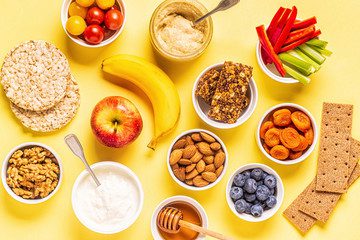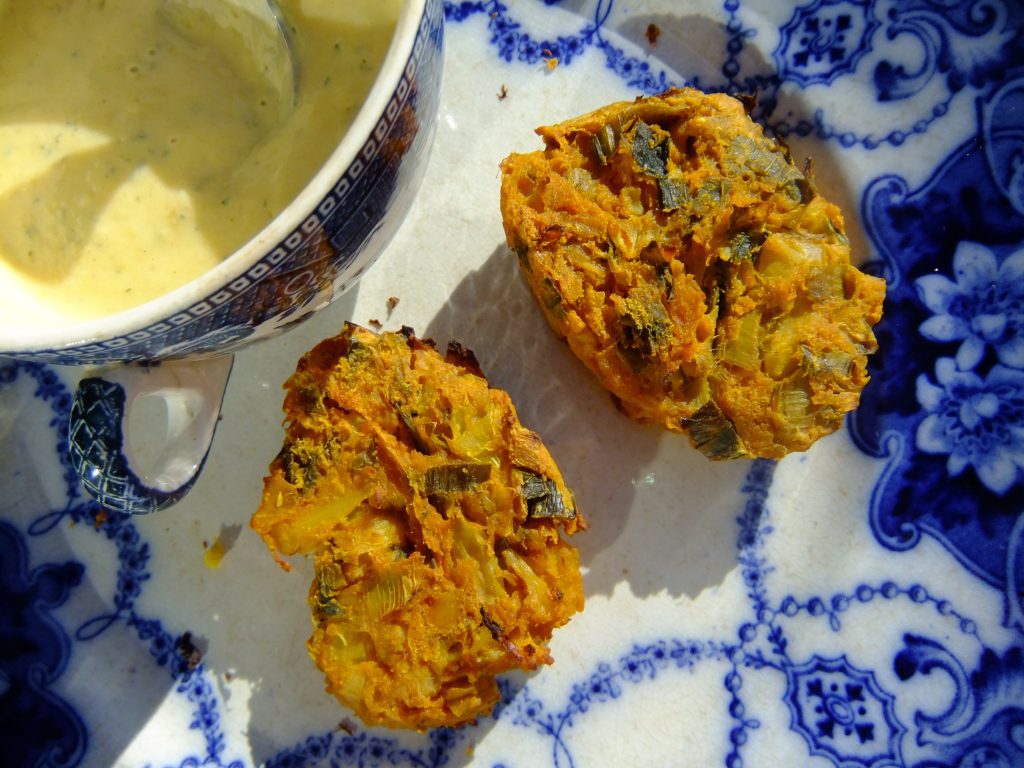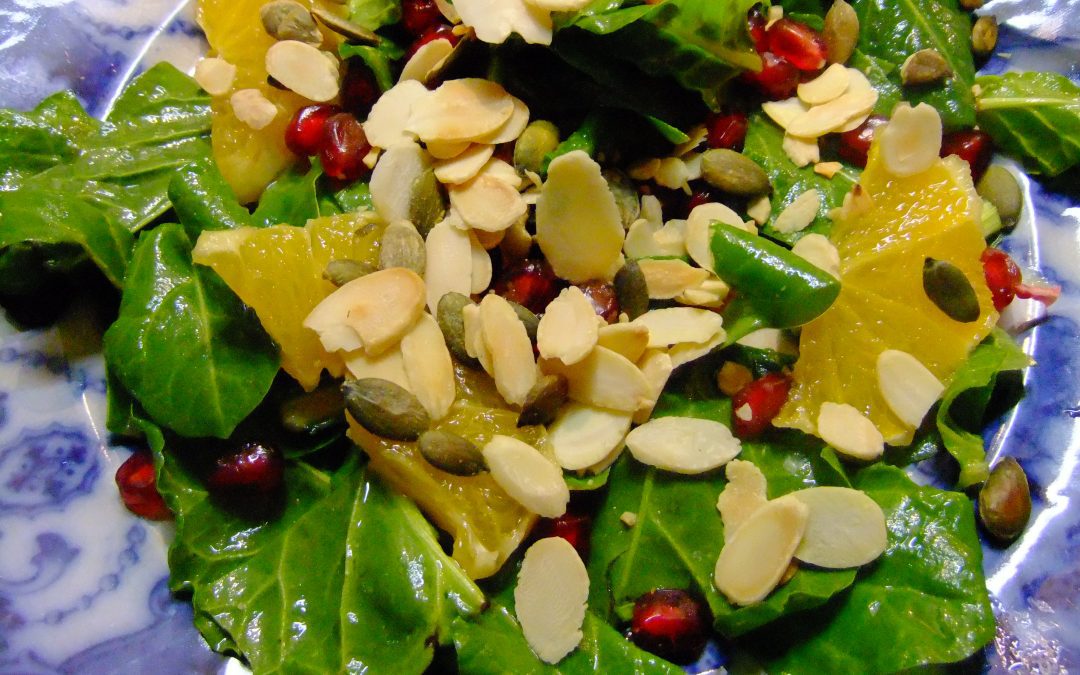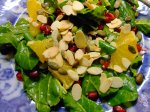
Apr 29, 2020 | Anna's Best Recipes, Main courses, Sides, starters, soups & snacks
I wish I could claim this idea as my own but every supermarket now sells spiralized courgettes for you to use instead of pasta. The oil and salt lift courgetti from being worthy to being delicious. I used to make a lot of wholemeal pasta dinners until I studied nutrition. Then I realised the large proportion of starchy foods in meals was contributing to my fatigue, frequent infections and poor stress tolerance. Rebalancing my plate helped me enormously within days.
For 2 people
2 medium courgettes
2 dsp extra virgin olive oil (more if you want!)
Pinch of Himalayan salt or sea salt
1. Make long strands of courgette: Either grate them lengthways (skin and all) on the big side of your grater or use a spiralizer.
2. Heat a frying pan on a medium heat. Add the olive oil, the courgetti and scatter over a generous pinch of salt.
3. Now heat, stirring every so often, for around 5 minutes. You want them heated, VERY slightly softened, but not so soft they release water and go into a bit of a mush. It took me a few tries to get this right!
4. Serve immediately with your pasta sauce. Enjoy!
 Why this is good for you:
Why this is good for you:
When we eat more than 1/4 of our lunch and dinner as high carb foods (e.g. pasta, potatoes, bread) it makes us more likely to struggle with poor detoxification (acne, PMS, headaches or fatigue anyone?). Your body stores excessive sugars as fat and this is why reducing carbohydrates to modest levels helps so quickly in getting you to your ideal weight. Farmers know that one of the fastest ways of fattening their livestock for market is to switch from grass-feeding to grain-feeding. Excessive sugars come not only from “healthy” grains, potatoes and fruit juice but also (even more) from added sugar foods like biscuits, cakes and “fruit juice drinks”.
About wheat pasta: Did you know that gluten breeches the lining of your small intestine within minutes of reaching it? This allows gut bacteria, waste and undigested food to flood into your bloodstream. It’s called increased intestinal permeability and lasts for a minimum of 3 hours. This has been proven by ground-breaking research using capsule video cameras swallowed by HEALTHY STUDY VOLUNTEERS. This is not related to gluten sensitivity or coeliac disease. It happens to everyone though its effects are more serious in those groups. So finding ways to lower gluten in our daily eating is a great way of moving towards better health. Looking after your gut lining makes you less likely to suffer sepsis should you become very ill with an infection. Low gluten grain choices include sourdough bread and oats. If you have an autoimmune condition like hypothyroidism (90% is autoimmune) you will need to switch to naturally (not highly processed!) gluten-free options.

Mar 13, 2020 | Anna's Best Recipes, Main courses, Sides, starters, soups & snacks
I invented this last winter when the bitter Seville (marmalade) oranges came out and it was lovely. You can make it with an ordinary orange though – it will just have more contrast of sweet and bitter which is super-delicious! If you are dairy-sensitive you can increase the walnut halves…Roquefort is a blue sheep’s cheese that contains a variety of beneficial bacteria for your tummy. Sheep’s cheese is also easier to digest than cow.
For 2
1 large head of chicory or a medium head of radicchio
1 orange, peeled and sliced thinly across its equator
2 tbs extra virgin olive oil
30g Roquefort cheese
Balsamic vinegar
Small handful walnuts
1.Wash and arrange leaves on two plates and top with the orange slices.
2.Crumble the Roquefort over and sprinkle on the walnut halves.
3.Drizzle a tablespoon of the olive oil and about a dessertspoon of balsamic over each plate and enjoy…
You could also make this salad using watercress or endive.
Why this is good for you:
Bitter foods (like radicchio, rocket, watercress, chicory, Seville oranges) stimulate your gallbladder to contract as the meal reaches your small intestine. The gallbladder pumps out fat-splitting bile salts and fat-digesting enzymes too. This is great news if you want to tune up your gallbladder, enhance the digestion of that meal, and facilitate removal of waste products from your liver. And avoid gallstones!!! Other bitter foods that help tune up your gallbladder include watercress, chicory, endive, organic rocket (much stronger than “conventionally-farmed”). Drinks that help your gallbladder if you drink it after a meal include dandelion coffee which you can buy on the fantastic Dublin-based website www.intelligenttea.ie Make just like for filter/cafetiere coffee and add milk if you want. DO avoid instant dandelion products, they are stuffed with sugar (lactose/dextrose usually) so they really are not helpful to you. 100% chicory drinks also have some benefit but dandelion is more potent.

Aug 9, 2019 | Anna's Best Recipes, Sides, starters, soups & snacks
This is a delicious way to enjoy cauliflower. I use my Middle Eastern tahini sauce as a dressing but you could also dress with extra virgin olive oil, lemon juice and some paprika/smoked paprika. If you like, add some chopped fresh oregano or flat leaf parsley when the salad has cooled. The tahini sauce is also lovely used as a sauce over some simple poached/grilled fish, or as a dip with vegetable sticks. Keeps well in an airtight jar for several days. I like to make the dressing a bit in advance, to let the flavours develop. Eat it warm or cold – it’s all good.
For the salad:
1 medium cauliflower, leaves removed
2 tbs extra virgin olive oil
1 dsp sumac
Freshly ground black pepper
Himalayan/sea salt
2 large handfuls (about 250g) green beans (or runner beans)
For the dressing:
1 rounded tbs light tahini
2 tbs lemon juice and about 125ml cold water OR 150ml home made kefir (lemon juice OR kefir gives the sauce acidity and balance)
1-2 cloves garlic, crushed
1. Preheat oven to 200C/185C fan
2. Placing the whole cauliflower with stalk downwards, cut in half, and cut out the big central stalk. Then slice each half in slices approximately 1.5cm thick. Slicing (rather than breaking into florets) helps the cauliflower to caramelize deliciously.
3. Place in an ovenproof roasting dish, drizzle with olive oil, sprinkle over the sumac, a good pinch of salt and lots of black pepper and mix gently to coat everything evenly.
4. Roast for 20-25 minutes until you can pierce easily with a fork.
5. While the cauli is roasting, boil the kettle. Steam the green/runner beans until they are slightly softened but retain some crunch. Drain and refresh in cold water. This stops the cooking process. Once cooled, drain.
6. Make the tahini sauce. Whisk or blitz together in a mini food processor all the sauce ingredients. You are aiming for a consistency about the texture of double cream. You may need to add more water as you go to achieve this. The tahini will clump initially. Just keep mixing, and adding more liquid if needed.
7. When cauliflower is cooked so a fork pierces it easily, empty it and the green beans, into a serving dish and drizzle with the sauce.
Why this is good for you;
Cauliflower is a sulphurophane vegetable. This means that (like broccoli and cabbage) it is rich in sulphur which is crucial for detoxification. Detoxification affects every aspect of our health so if you want clear skin, good energy, mood and to keep clear of any health conditions, these sulphur rich veg are great to eat at least 3 times a week.
Garlic is also rich in sulphur and helps rebalance your gut bacteria in favour of useful micro organisms which ALSO aid detoxification. In fact over 70% of your detoxification is looked after by good gut bacteria – if you have enough quantity and variety of them!! Spices like sumac, paprika and black pepper, used to coat food, help reduce the toxic substances generated by roasting/heating food to high temperatures.
Spices (and herbs) also stimulate our body’s antioxidant defenses to keep us looking and feeling better for much, much longer. Kefir, especially when home-made, is a hypoallergenic milk product that’s really rich in over 30 species of beneficial micro organisms. Did you know that although many of these micro organisms dont survive the acid in our stomachs they still exert a beneficial effect. Research has shown that even heat-killed friendly bacteria do us good when we take them. Who knew! Of course we really also want to grow our own good bugs, which colonise and cling to the walls of our large intestine. There they ferment plant fibres (if we eat a big variety of plants) to make short chain fatty acids. Short chain fatty acids like butyrate are essential for daily repair of our gut. Get your gut health right and you have at least 90% of your health sorted.

Dec 19, 2018 | Anna's Best Recipes, Main courses, Sides, starters, soups & snacks
This is a recipe I love. We eat it Christmas day with a simple salad of watercress and lambs lettuce. Instead of doing what the recipe says (wrapping everything in foil while it cures) I use a glass box with plastic lid to keep everything compressed during 5-8 days or curing. Much less fiddly. Lime zest/beetroot are optional but give an amazing taste and a lovely deep pink colour. Before you start, freeze the salmon for at least 24 hours to help kill any parasites. The salt, pepper and dill in the cure and the mustard in the sauce also help kill any unwanted visitors to your tummy!
For the cure:
1 large side of salmon, organic if possible, cut into 2 roughly equal shape pieces
Zest of 1-2 organic limes
1 large bunch fresh dill
115g sea salt/Himalayan salt – flakes or fine it doesn’t matter
50g coconut sugar (use brown sugar if you don’t have coconut)
75g xylitol or erythritol (from health shops)
15g freshly ground black pepper (coarse is OK)
Optional beetroot – 1 raw, grated (cooked might work too)
Tinfoil
For the sauce (to serve with the fish on the day):
1 tbs chopped fresh dill
1 tbs English mustard powder (if you don’t need gluten-free you can use ready-made English mustard from a jar)
1 tsp coconut sugar, erythritol, xylitol or brown sugar
1 tbs virgin (cold pressed unrefined) sunflower/peanut/rape/sesame oil
2 tbs kefir*, creme fraiche (for dairy-free use unsweetened additive-free soya yoghurt)
1 tbs white wine vinegar or apple cider vinegar
*home made fully-fermented kefir is usually tolerated by people with dairy sensitivity
1. For the cure (5-8 days before you want to eat the fish)
Roughly chop the dill and mix thoroughly in a bowl with the zest, salt, sugar, xylitol/sugar, lime zest, optional beetroot and pepper. Lay out a sheet of foil about four times the width of a salmon fillet. Spread a quarter of the pickling mix over a fillet-size area on one side of the foil with a good 15cm/6in margin for folding over.
2. Place one piece of fish, skin side down, on top of the pickle mixture and cover with slightly more than half of what is left. Place the second fillet on top, skin side up, to make a sandwich. Scatter the remaining pickle mixture over the skin. Wrap up the parcel tightly, tucking the ends and edges in underneath the fish.
3. Put the package on the tray and place a similar size tray, or a plank of wood on the top. Weight it down, with a brick or two or anything else handy (the contents of the fridge?). Turn the package daily for at least five days, and no more than eight. Do not discard the pickling liquid that oozes from the package unless it threatens to spill over the side of the tray.
4. At least one hour before you wish to serve the fish, combine all the ingredients for the dressing in a jar and shake well together. Leave to stand and shake again to emulsify before serving.
5. To serve, unwrap the gravalax and wipe off any excess pickling liquid. I like to scrape off the bits of dill and beetroot and give everything a quick wipe but you don’t have to. Slice fairly (but not too) thinly then serve with the sauce and a green side salad (I love watercress and lamb’s lettuce with this). Unused gravalax can be re-wrapped in clean foil or airtight glass box and kept in the fridge for up to five days.

Aug 22, 2018 | Anna's Best Recipes, Main courses, Sides, starters, soups & snacks
I made this for a birthday gathering last week and people LOVED it. It is a baked version of the more oily deep green frittata popular among Persians. There they serve little squares of it with drinks. This quantity makes enough to serve 4 people as part of a mezze meal. Give yourself plenty of time to make it though, it takes a while to process or chop all the herbs. The recipe is from Sabrina Ghayour’s Persiana.
200g flat leaf parsley
200g fresh coriander
40g fresh dill
40g fresh chives
2 bunches spring onions, thinly sliced
3 tbs extra virgin olive oil
2 tsp turmeric powder
8 medium organic eggs
2 tbsp gluten-free flour of your choice (I mix millet, gluten-free oat flour and sorghum or brown rice flour. Or use gluten-free oats blitzed to a flour in your food processor)
2 rounded tbs thick kefir or Greek yoghurt (to thicken your kefir, line a sieve with muslin or a single layer of kitchen paper, strain the kefir, letting the thin whey drain off). If you are very dairy-sensitive you can use natural soya yoghurt instead of Greek yoghurt/kefir (though many dairy-sensitive people can cope with fully fermented home-made kefir because the casein and lactose has been digested by friendly bugs)
3 tsp gluten-free baking powder
½ level tsp Himalayan salt or Atlantic sea salt
freshly ground black pepper
3-4 heaped tbs dried barberries, optional (I buy mine in the Asia Market, Dublin 2)
100g walnut pieces, chopped
Pyrex/ovenproof dish (22x30cm is ideal)
Non-stick baking paper (silicon paper)
1. Preheat the oven to 180C/fan 160C. On a medium heat warm a large cooking pot.
2. Finely chop all the herbs (if using a food processor, do this in 2 batches). Pour the olive oil into the warm pan and sweat the spring onions and herbs for a few minutes, then add the turmeric and stir to mix. Cook for a further 5 mins, then place the herbs on a flat plate and allow to cool.
3. Grease your ovenproof/pyrex dish and line with non-stick baking paper. This makes it easier to remove after everything is cooked.
4. Beat the eggs with the kefir/yoghurt, baking powder, salt, gluten-free flour and about half a level teaspoon of freshly ground black pepper (or to taste).
5. Once the herb mix has cooled so its no longer piping hot, slowly add a couple of spoonfuls at a time to the egg mixture and stir well until all the herb mix is combined. Add in the barberries and walnut and mix well once again.
6. Pour in the egg and herb mixture and bake for 35-40 mins. To check if the frittata is cooked, insert a knife into the centre. If it comes out clear of raw egg, the dish is done. If not, return to the oven for a few minutes. Once cooked, allow to cool, then cut into squares to serve. Enjoy…
Why this is good for you:
All herbs and many spices (especially turmeric) have antioxidant properties, helping reduce inflammation and keep you looking and feeling younger longer. Most herbs and spices have a selective action on your gut bacteria – fostering the helpful bacteria and helping reduce numbers of pathogens (disease-causing ones). Coriander also helps chelate (bind) the toxic metal mercury. If you have mercury dental fillings you are ingesting a significant dose every single time you eat. when coriander is in your gut at the same time it latches on to the mercury and escorts it safely out via your bowel. Onion family veggies also feed good bacteria which are needed for ALL aspects of your health. Green plant foods are rich in magnesium needed for detoxification of the many toxins our body needs to process every day. Magnesium is essential for keeping us calm and happy.

Jun 1, 2018 | Anna's Best Recipes, Main courses, Sides, starters, soups & snacks
This is a lovely on a summer’s day – especially as we’re getting some decent sun here in Ireland this year. The photo doesn’t do it justice – it’s day-glo green! If you have young children and a spiralizer they will really enjoy helping make the courgetti. Otherwise just buy spiralized courgettes or at a push, take a grater and grate the courgettes lenghtwise to get very long strings. To make this a complete meal just add some protein – maybe some leftover cooked chicken, or some prawns tossed in a hot pan with a little coconut oil and a chopped red chilli until cooked. The recipe is by food blogger Aoife Howard.
To serve 3
1 tsp garlic (1 big clove) crushed
1 large bunch fresh basil, destalked (reserve a few leaves for serving)
Juice 1/2 lemon
1/2 a ripe avocado
1 tbs extra virgin olive oil
Water
5 stalks of kale, washed, destalked and roughly chopped
Himalayan salt, sea salt and black pepper
1-2 courgettes per person, spiralized
1. Food processor method: combine avocado, lemon juice, basil, olive oil and kale. Pulse the mix, gradually adding the water one tablespoon at a time until smooth
Blender method: liquidize the garlic, basil, lemon juice, avocado and oil with a couple of tablespoons of water til smooth. With the motor running add the kale gradually, dropping in a few bits at a time. Blitz till everything is a vibrant, smooth green sauce. You might need to add a few more tablespoons of water to get the right consistency to coat your courgetti.
2. Add the salt and pepper to taste.
3. The courgetti can be eaten raw but if you prefer, gently warm through on a frying pan (ideally ceramic*) for 1-2 minutes until tender. If you don’t have a ceramic pan, you’ll need to put the merest smear of olive oil on your pan to stop the courgetti sticking.
4. Drizzle the pesto over the courgetti and toss well. serve topped with your choice of protein and garnish with a few torn up basil leaves.
* Why use a ceramic pan? These are pans that have a great non-stick surface but don’t add toxic teflon to your food every time you cook. Teflon is the black coating on non-stick cookware. The next best thing to a ceramic pan would be stainless steel or even cast iron.
Why this is good for you:
Raw food contains enzymes which help digestion. It also retains more vitamins (C and B vitamins) than cooked food. Green foods are rich in magnesium which helps us unwind mentally and physically and is also crucial for our immune systems. Basil, garlic and extra virgin olive oil help reduce numbers of toxic micro organisms in your gut. For optimum vitality long-term we all need to eat at least half our lunch AND dinner as non-starchy veggies like greens and salad vegetables.

Jun 15, 2017 | Anna's Best Recipes, Breakfasts & smoothies, Sides, starters, soups & snacks
 How do you increase your veggie intake to help your health if you have almost no time in the evenings to prepare a full meal or you have problems chewing? Try these green smoothies. You can even make two servings and store leftovers in an airtight glass jar in the fridge for the next day. Citrus juice and airtight containers help prevent oxidation (nutrient loss and discolouration). If you don’t like your green smoothies cold you can heat these VERY gently in a saucepan until they are lukewarm.
How do you increase your veggie intake to help your health if you have almost no time in the evenings to prepare a full meal or you have problems chewing? Try these green smoothies. You can even make two servings and store leftovers in an airtight glass jar in the fridge for the next day. Citrus juice and airtight containers help prevent oxidation (nutrient loss and discolouration). If you don’t like your green smoothies cold you can heat these VERY gently in a saucepan until they are lukewarm.
Garden walk (950ml or 2 servings)
1 cup baby spinach, packed
1 cup fresh parsley (any type), packed
2 large ripe tomatoes
2 tbs freshly squeezed lemon juice
½ avocado
¼ tsp chilli pepper (can cause flushing so avoid if you have rosacea)
Optional: a cupful or so of filtered, boiled and cooled, or bottled spring water to help everything go round in the blender. Wash and chop everything roughly. Blitz well.
Cucumber dill-icious soup (950ml or 2 servings)
1 large cucumber
½ a small bunch of dill (or use fresh basil if you like)
1 small avocado
3 leaves curly kale, stalks removed
1 large stalk celery
½ lime, juiced
2 cloves garlic*
Wash everything and blitz everything with a little filtered, spring or boiled and cooled water to help it all go round in the blender.
Wild green pear (makes about 500ml)
1 ripe Bartlett or Williams pear (these are lovely and sweet)
1 cup local greens (e.g. rocket, organic baby spinach, lettuce, kale, watercress, beet tops, young dandelion greens)
1 cup water
1 heaped teaspoon sunflower seeds, pumpkin seeds or 8 blanched almonds
Wash, roughly chop and blitz the fresh produce with the water and sunflower seeds.
Salad smoothie idea (or “make this up as you go along”)
Blitz a large handful of roughly chopped green leaves, a tomato, celery stick, heaped dsp chopped red onion, clove of garlic, half a red or green pepper, a glug of extra virgin olive oil, a squeeze of lemon and a generous splash of tomato juice from the carton. Add Himalayan (pink) salt and fresh ground black pepper to taste.
Green gazpacho (makes about 3 large servings)
A green take on the traditional chilled Spanish summer soup. Quite filling.
1 bunch spring onions
3 cloves garlic, roughly chopped*
1 small green pepper (stalk and seeds removed)
100g organic baby spinach ½ romaine lettuce (or any lettuce other than iceberg)
1 avocado
Small bunch fresh coriander
1 small green chilli, halved and deseeded (optional)
50g ground or blanched almonds
3 tbs extra virgin olive oil
3 tbs apple cider vinegar/1 of white wine vinegar and 2 of sherry vinegar
200ml water (filtered, boiled and cooled, or use bottled spring water)
Himalayan (pink) salt
Freshly ground black pepper to taste
Optional: 3 tbs home-made kefir or natural yoghurt (or use unsweetened soya/almond-based yoghurt if you are avoiding dairy due to sensitivity or skin health issues)*
Wash and roughly chop the veggies, leaves and herbs. Put into your blender processor with the 3 tbs olive oil, the citrus juice/vinegar, 200ml water and whizz to a thick puree. You might have to do this in 2 batches. Taste for seasoning. If it’s a bit bland then add salt, freshly ground black pepper and maybe more lemon juice/apple cider vinegar or olive oil. It’s the amount of seasonings that makes this a great soup. Serve chilled with another generous slug of extra-virgin olive oil.
For more great green smoothies buy Victoria Boutenko’s “Green Smoothie Revolution” available on www.bookdepository.com (postage is free). If you make smoothies which include a piece or two of fruit, always include some protein/good fats (e.g. nuts, seeds, avocado, coconut oil) to avoid sudden dumps of sugar in your bloodstream that compromise digestive/skin health and energy.
What’s good about green smoothies
Green veggies are rich in magnesium needed for healthy skin, a chilled mind and plenty of energy. They are giving you a range of skin-supporting, digestive-system healing and vitality boosting phytonutrients.
*Garlic is a natural antibiotic. But unlike antibiotic medications, it helps healthy bacteria in your gut to flourish and lowers levels of disease-causing yeasts and bacteria. If you are new to using raw garlic, start small and build up. As it kills off disease-causing micro-organisms you may notice some short-term flatulence! This will disappear over time as you keep going – replacing unhelpful micro-organisms in your gut with healthy ones to help every aspect of your health.
Organic vegetables and fruits, where you are eating the outer surface (rather than peeling) give you a little dose of healthy bacteria with every mouthful. In “conventional” produce good bacteria are absent. Herbicides kill the beneficial soil bacteria. Monsanto originally patented the bestselling herbicide glyphosphate as an antibiotic. It disrupts thyroid function, nerve function and is deeply toxic. Many “conventional” crops contain residues.
Why use filtered, boiled and cooled or bottled spring water in a smoothie? This is to avoid chlorine, that kills beneficial bacteria in your gut and suppresses thyroid function. Boiling allows the chlorine to evaporate. Chlorine, like fluoride, disrupts your thyroid function by blocking iodine. Iodine also helps prevent skin infections, PMS and hormonal cancers (e.g. breast, prostate).

Mar 2, 2017 | Anna's Best Recipes, Sides, starters, soups & snacks
If you go for longer than 5 hours between meals you might sometimes need a snack. Most people who eat well balanced meals like on this blog don’t need to snack in-between and can fast for longer for extra health benefits. But here are some really easy snacks that give you carbohydrates (naturally sugar-containing foods like wholegrains or fruits) alongside protein/good fats (e.g. nuts, yoghurt, humous) for sustained slow-burn energy. Most of these foods are packed with nutrients to help you look and feel your best. Go for organic fruit and veg if you can – glyphosate residues on “conventional” produce kill beneficial bacteria and damage your gut. If you don’t have time for breakfast some of these snacks can fit the bill now and again if you include some fresh veg or fruit.
- 2 fresh apricots/plum + 4 walnut halves.
- Medium pear + 8 almonds.
- Medium apple + dessertspoon sunflower seeds.
- Nectarine or peach + dessertspoon pumpkin seeds.
- Apple + generous teaspoon almond butter straight from the jar.
- Handful carrot/cucumber sticks or red pepper strips + tablespoon humous.
- 1-2 Nairns rough oatcakes* (available in gluten-free also) + no-sugar peanut butter.
Note: The sweet Nairn’s oatcakes/biscuits have added sugar (not a vitality-boosting snack!).
1-2 oatcakes with generous topping of humous or lots of mashed avocado. - 1-2 oatcakes with thick tahini (ideally a raw brand e.g. Carly’s, from health shops).
- 1-2 oatcakes + cottage cheese and a sprinkle of black pepper.
- Mouthful leftover cooked chicken, smoked fish + an apple, mandarin or pear afterwards.
- Handful berries + 2-3 heaped tbs natural organic yoghurt.
- 2 fresh plums/apricots + 3 heaped tbs dairy-free “yoghurt” e.g. Coyo, Abbot Kinney’s Almond Starter, or unsweetened soya yoghurt.
- Small banana blitzed with 1 cup natural yoghurt/kefir + generous pinch of turmeric or cinnamon.
- For a treat try a Nakd bar from Tesco/health shops (=nuts + dried fruit).
- For another treat try 1-2 squares of 80% chocolate + dessertspoon sunflower seeds or 8-10 hazelnuts. Not too often though – 80% chocolate still contains added sugar.
Now you get the idea – a great snack is a portion of slow-release carbs (e.g. oats, whole fruit, carrot sticks) + high quality protein and/or good fats
Why these snacks are better for you
Carbohydrates are foods naturally high in sugars or with added sugars. Grains, root veg (potatoes, carrots) and almost all fruits are high in carbohydrates. Sugar, honey, fruit juice and white grains are even higher so aren’t a great choice in your regular diet. Carbs on their own (even from natural foods) give a quick rise in blood sugar that’s dangerous for your body. This promotes peaks and slumps in energy. But carbs combined with protein/good fats give you a better, longer-lasting slow-burn energy. Protein foods include meat, fish, beans, nuts, seeds, yoghurt, cheese, lentils and chickpeas. Great news if you want to look and feel your best for a long time to come.

Feb 17, 2017 | Anna's Best Recipes, Sides, starters, soups & snacks

Gluten-free baked cauliflower bahjis
I’ve been craving bhajis that are not deep-fried and finally got my wish with this lovely oven-baked recipe. This recipe is slightly adapted from one by Susanna Booth in the Guardian. Great for a buffet, finger food for a party, as a starter, or cold for a picnic. Everyone’s happy to eat it and take seconds. They
don’t need to know that its both gluten-and dairy-free! I like these just as much cold as hot.
NB some mango chutneys contain malt vinegar, which contains gluten, so read the label carefully before you buy.
Makes 15-20
For the bhajis
300g cauliflower
2 medium leeks, green and white parts
1 tbs olive oil (or, even better, virgin coconut oil)
100 gram (chickpea) flour
1 rounded tsp (teaspoon) ground turmeric
1 level tsp ground coriander
1 level tsp ground cumin
A pinch of Himalayan or Atlantic Sea Salt
80ml water
2 tsp mango chutney (make sure it’s a gluten-free one that does not contain malt vinegar) OR 2 rounded tsp St Dalfour or Follain no added sugar apricot jam and a pinch of ground ginger OR 2 tsp unsweetened mango puree (you can do this by blitzing the mango for the dip and reserving 2 tsp for the actual bahjis).
2 rounded tsp tomato puree
Olive oil (or even better, virgin coconut oil) for greasing the baking tin
For the dip
100g natural soya yoghurt (or natural yoghurt or thickened kefir for for milk-eaters)
Half a ripe mango
1 rounded tbs (tablespoon) mango chutney (again, make sure it’s gluten-free)
5 fresh large mint leaves
1. Preheat the oven to 180C. Wash and prepare the cauliflower and leeks. Dice the cauli into tiny pieces; cut the leeks lengthways and then into thin slices. Sweat all the veg in the olive oil in a heavy bottomed pan, covered with a lid, for 5-10 minutes until just softened.
2. Put the gram flour, spices and salt in a bowl. Add the water, chutney and tomato puree and mix to a smooth paste. Add the sweated vegetables and stir until everything is well coated. It will be very thick.
3. Drizzle a little olive oil over a taking tray. Rub with a spatula or brush to coat the whole surface.
4. Dollop the bhaji mix on the tray 1 tbsp at t time. Flatten them a little with the back of a spoon, spatula or fishslice.
5. Bake for 10-15 minutes until slightly browned. Take the tray from the oven, then flip each bhaji over using a fish slice. Bake for another 10-15 minutes until golden. You can eat them hot or cold.
6. Make the dip by blitzing the chutney, mango, mint and yoghurt together in a mini food processor or else use a bowl and stick blender. Refrigerate for up to a day before serving.
Variation:
I made an imitation mango chutney for this recipe by mixing a few things I had in the cupboard: 1 1/2 tbs St. Dalfour apricot jam, a pinch of onion salt, a large pinch of each of dried garlic and ground coriander and 1/2 teaspoon of distilled or wine vinegar.
Why this is better for you:
Gram (chickpea) flour is a good source of protein to help keep you feeling fuller for longer. Leeks are rich in inulin, which helps feed good gut bacteria. Good bacteria are important for all aspects of your health from weight management to clear skin and good digestion and absorption of nutrients. Because these bhajis are baked rather than deep fried which means they don’t toxic heated polyunsaturated oils. In cooking, coconut oil is even better for you then olive oil. This is because coconut oil is less damaged by heating then olive oil. coconut oil is rich in medium chain triglycerides, which can help boost energy because the body digests them very easily. Amazingly, coconut oil is used by your body directly to make energy rather then being stored as fat in your body. This makes it a better tool for weight management than many other oils. Herbs and spices such as turmeric, cumin and coriander have well-documented anti-inflammatory properties and a great health boost for anyone who cares about their health, fitness or skin.

Jan 5, 2017 | Anna's Best Recipes, Sides, starters, soups & snacks

Spinach pomegranate & orange salad
I stole this salad from a newspaper and adapted it to include some protein (flaked almonds) so you’re not just getting a huge blood sugar spike from all the fruit. This makes a lovely starter before a winter stew of some sort. Or else make a big platter of it for a buffet meal. The colours are stunning. Pomegranates are still in season in January (they start in November in Asian shops and good greengrocers). If you can’t get pomegranates then either increase the orange to a whole one or substitute a tablespoon of goji berries soaked overnight in clean water.
2 large handfuls baby spinach, washed and dried
1 tbs pumpkin seeds (for SC diet initial 12 weeks use almonds instead)
1 tbs flaked almonds
1/2 a small orange
A fresh pomegranate (you will use 1/4 to half of the seeds)
Dressing:
3 tbs virgin hazelnut or walnut oil (or use extra v. olive oil at a push)
Juice of 1 small orange
Freshly ground black pepper
Pinch of Himalayan/Atlantic Sea Salt
1. On a very low heat in a heavy bottomed pan, gently dry the pumpkin seeds and flaked almonds, until they seem dry and the pumpkin seeds are slightly swelled. It is better to eat nuts and seeds raw but this light toasting does make them super delicious. Remove from the heat as soon as they are slightly dried and crispy.
2. While this is happening, whack your whole pomegranate all over with a wooden spoon or a pestle for a few minutes. This loosens the seeds. Then cut it in half and pick out the ruby-coloured seeds.
3. Cut your orange in half across its equator, cut off the skin and pith with a sharp knife. Cut the remaining piece in half, then slice as thickly or as thinly as you feel like.
4. Mix your dressing in a screw top jar and shake to amalgamate.
5. Now put half the pomegranate seeds, the orange, spinach, and at least a tablespoon of dressing in a large bowl and toss until coated and glistening.
6. Divide between two plates, adding more pomegranate seeds if you think there’s not enough for your liking. Sprinkle over the almonds and pumpkin seeds. Enjoy…
Why this is good for you:
Spinach, like all dark green leafy veg, is rich in folic acid. Folic acid is important for your liver, helping keep your skin clear and healthy. Its also important for your mental health, helping reduce stress levels. Pomegranates are high in antioxidants and the raw, virgin cold-pressed oils are a good source of omega 6 oils and vitamin E for beautiful skin. Don’t forget to keep your virgin nut/seed oils in a cool dark place in an airtight bottle, so the delicate beneficial oils don’t get damaged. Pumpkin seeds are a rich source of methionine (and zinc) which helps clear heavy metals and other toxins from the body. Almonds are high in calcium and magnesium for good stress management and clear skin.
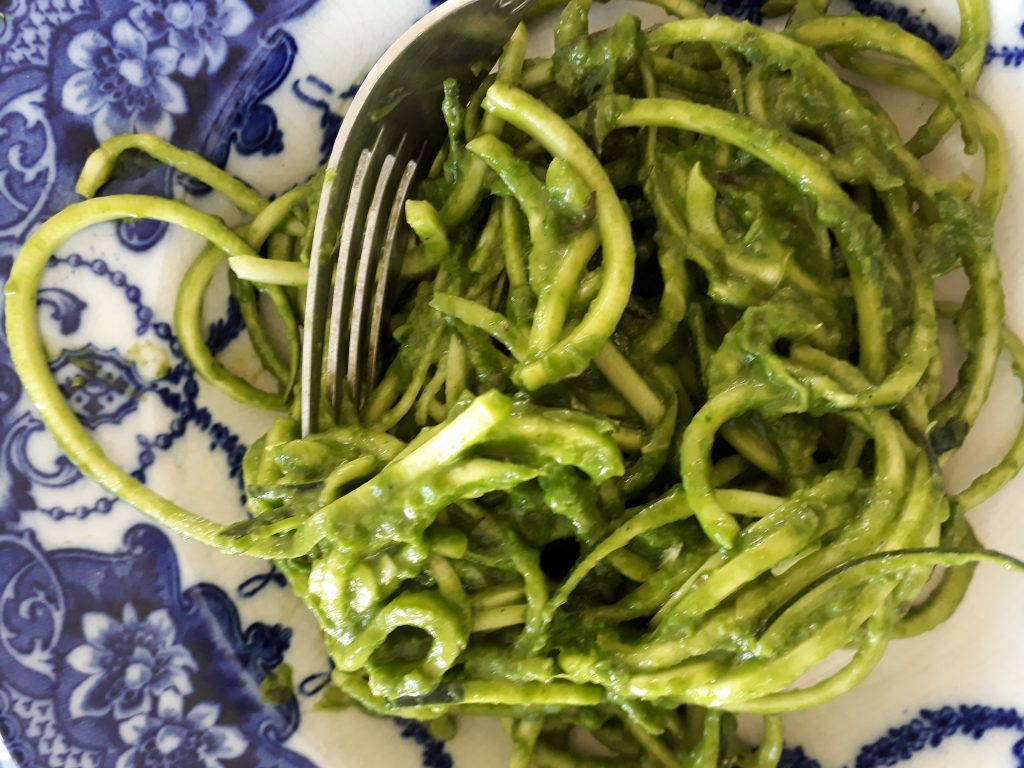
 Why this is good for you:
Why this is good for you: 


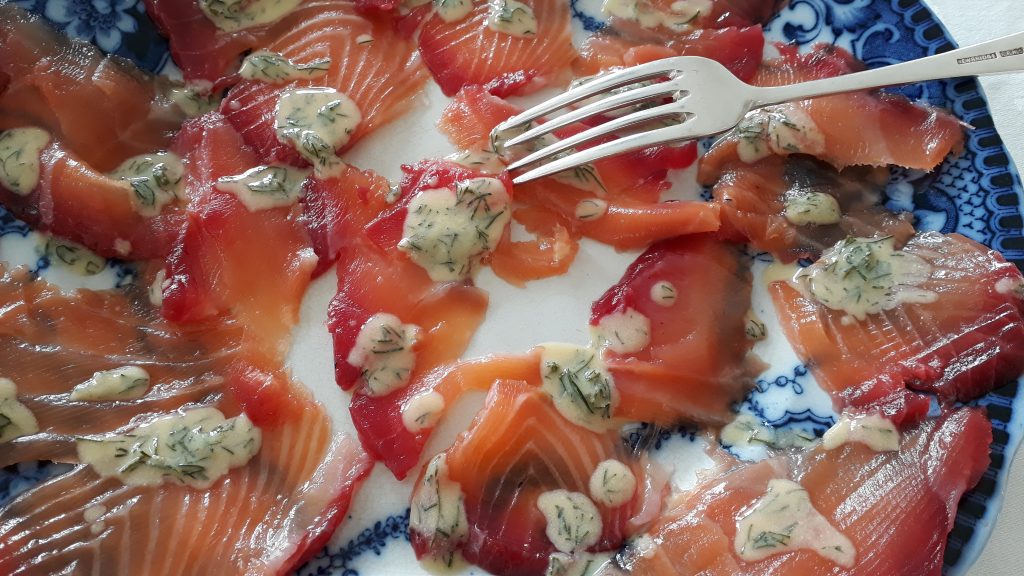
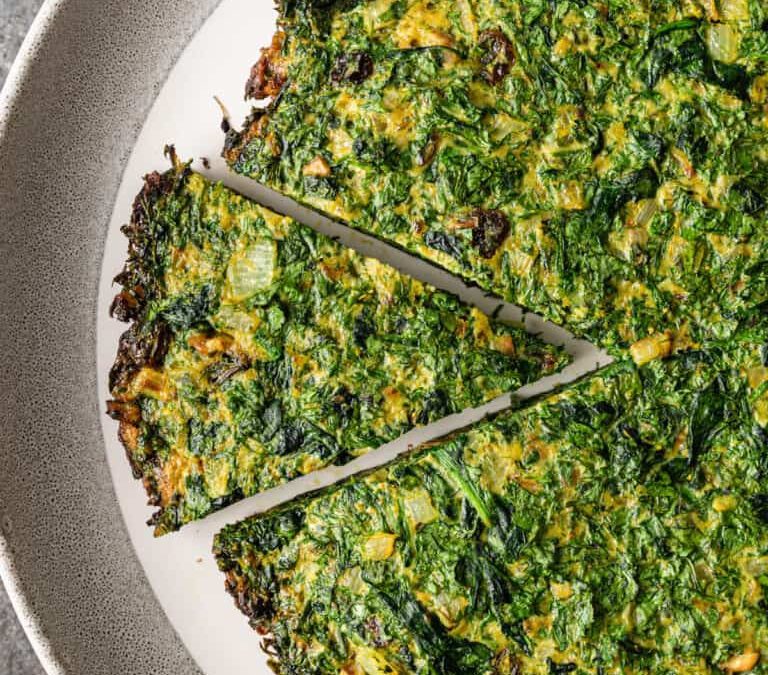
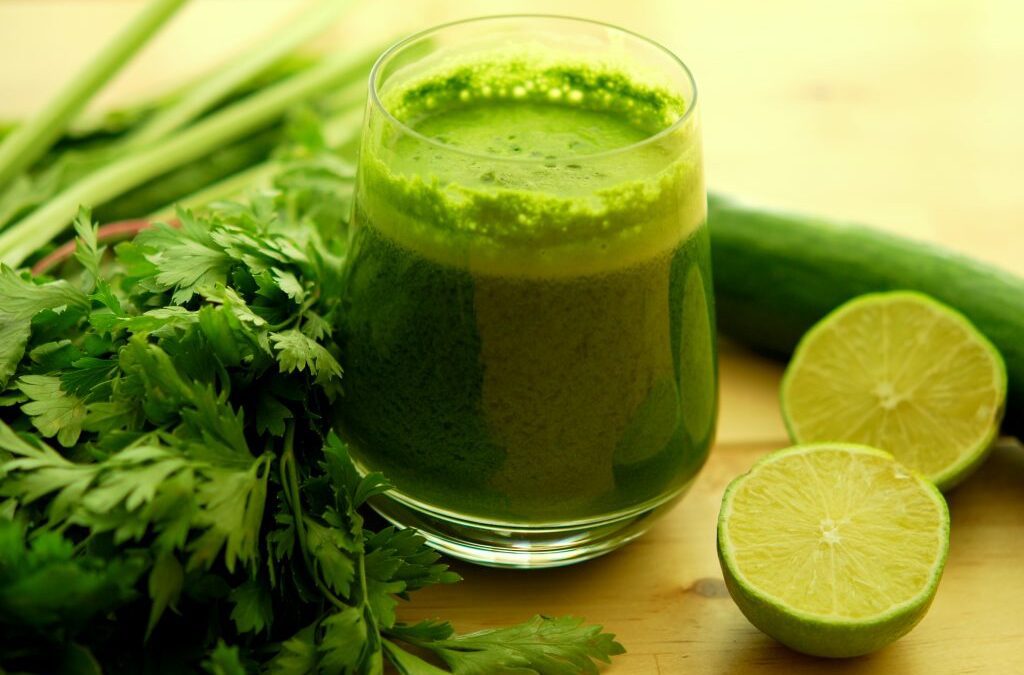
 How do you increase your veggie intake to help your health if you have almost no time in the evenings to prepare a full meal or you have problems chewing? Try these green smoothies. You can even make two servings and store leftovers in an airtight glass jar in the fridge for the next day. Citrus juice and airtight containers help prevent oxidation (nutrient loss and discolouration). If you don’t like your green smoothies cold you can heat these VERY gently in a saucepan until they are lukewarm.
How do you increase your veggie intake to help your health if you have almost no time in the evenings to prepare a full meal or you have problems chewing? Try these green smoothies. You can even make two servings and store leftovers in an airtight glass jar in the fridge for the next day. Citrus juice and airtight containers help prevent oxidation (nutrient loss and discolouration). If you don’t like your green smoothies cold you can heat these VERY gently in a saucepan until they are lukewarm.